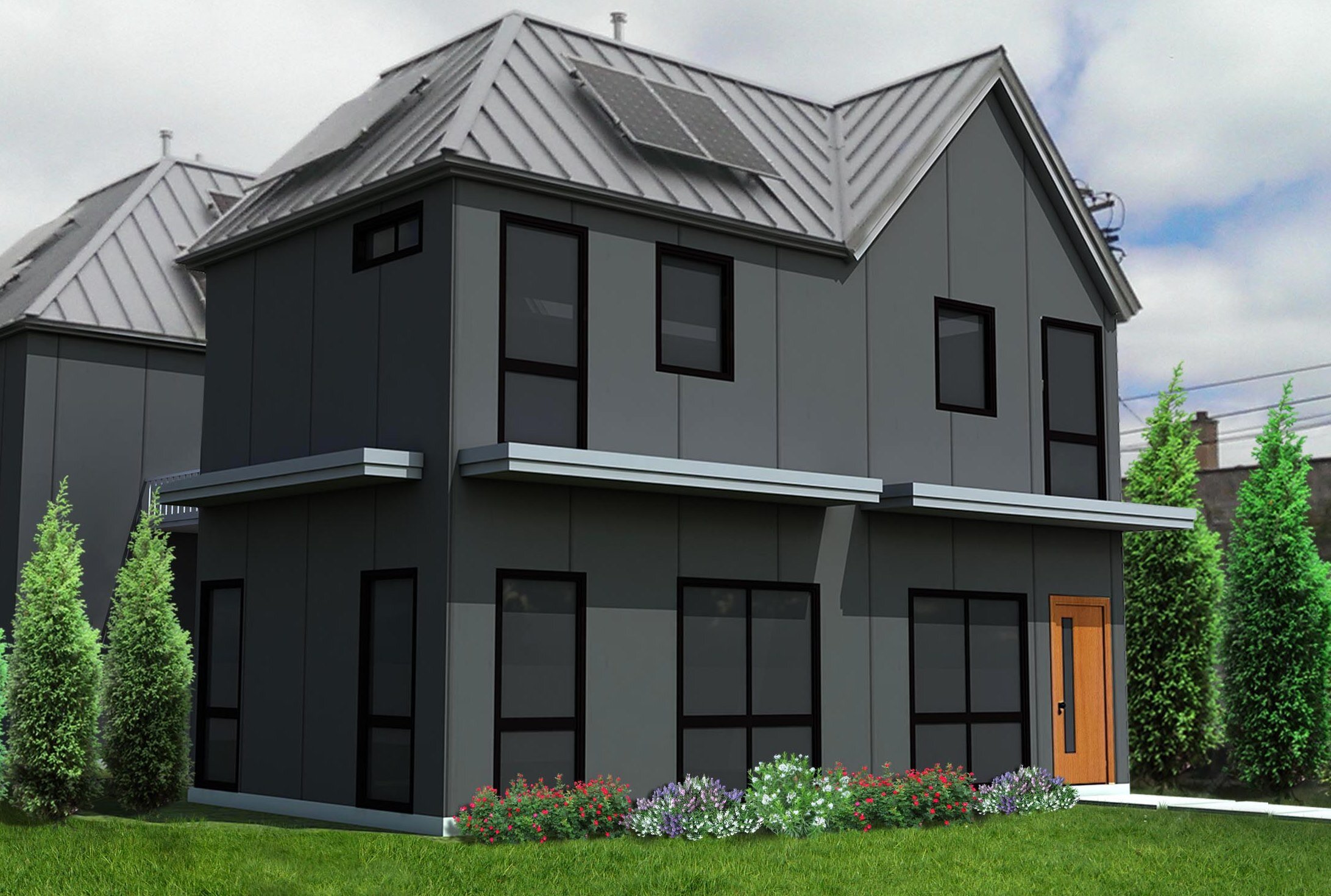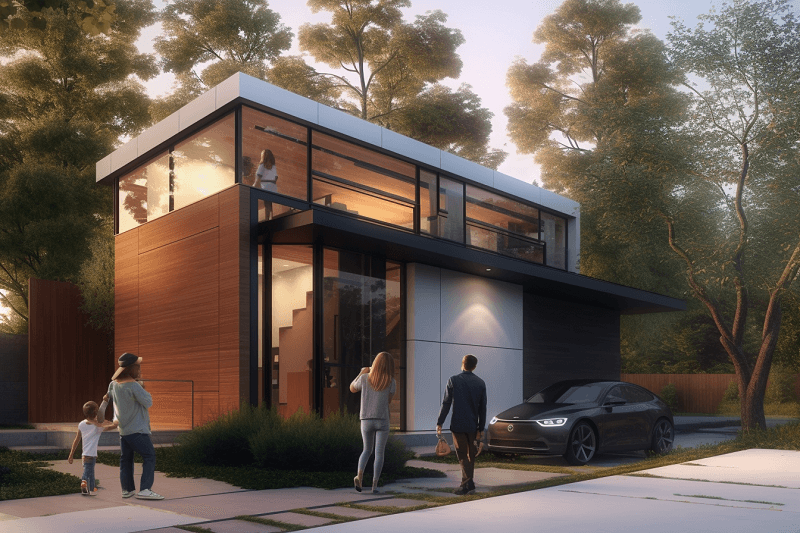Tesla Homes With Renewable Power Solutions Video Shows Fire During Flooding Conditions
Tesla Homes With Renewable Power Solutions Video Shows Fire During Flooding Conditions
Blog Article
Tesla Homes With Seamless Solar Integration House That Comes With A Battery

Tiny home dwelling continues to achieve popularity, drawing individuals looking for affordability, simplicity, and sustainability. However, there are quite a few legal issues for tiny home dwelling that should not be missed. As individuals transition into this minimalist lifestyle, it is essential to navigate the complexities of zoning laws, constructing codes, and land use rules.
Zoning legal guidelines dictate how land can be utilized in a particular area, affecting where tiny homes can be located. In many municipalities, traditional zoning laws don't account for the distinctive nature of tiny homes. This inconsistency can result in challenges when attempting to position a tiny home on so much. Some areas could permit tiny homes as accent dwelling items, whereas others could strictly prohibit them.
Building codes are one other essential side of tiny home residing. These codes set forth requirements for the construction of homes to ensure safety, habitability, and structural integrity. Tiny homes, often built on trailers or as prefabricated units, may not meet conventional building codes. It is vital to verify whether or not native authorities acknowledge tiny homes and what particular codes apply to them.
Tesla Homes For Renewable Living House Fire Reported After Heavy Rain
Permitting is a necessary step before relocating a tiny home. Homeowners must acquire the suitable permits to make sure compliance with native legal guidelines. This allow course of can differ significantly by state or locality and should contain inspections and charges. Failure to safe the mandatory permits can lead to fines or the inability to live in the tiny home.
Land issues play a big position in tiny home legality. Many individuals choose to park their tiny homes on private property, whether it be a family member's land or a delegated tiny home group - Tesla Homes For Off-Grid Living. Understanding property rights and lease agreements becomes imperative in these conditions. Additionally, it’s essential to verify whether the chosen land is zoned for residential use.
Homeowners must also consider householders associations (HOAs) if residing in areas ruled by these organizations. HOAs typically have strict rules relating to residential buildings and aesthetics. Tiny homes may not adjust to these regulations, which may result in conflicts. It is advisable to seek the assistance of the HOA guidelines before proceeding with tiny home plans to avoid disputes.
Tesla Homes For Modern Living Fire Incident During Flooding Event

Financing choices pose another challenge. Many monetary establishments are hesitant to offer loans for tiny homes because of their unconventional nature. Understanding various financing avenues, corresponding to personal loans or specialized lenders who cater to tiny homes, is essential. Exploring these options may help potential homeowners make knowledgeable choices and secure funding.
Insurance presents one other authorized avenue for tiny home living. Obtaining insurance for a tiny home can differ extensively from commonplace owners insurance policies. Due to their unique buildings, many corporations might not present protection, or they may require specific endorsements. Finding an insurer knowledgeable about tiny homes can help mitigate risks associated with injury or liability.
Tesla Homes With Powerwall Home For Sustainable Living
In addition to local laws, federal laws might influence tiny home dwelling. Regulations from the Department of Housing and Urban Development (HUD) outline standards for cellular and manufactured homes. If a tiny home is constructed on a permanent foundation, it could want to meet these requirements. Compliance with federal tips can differ primarily based on a home’s classification.
One rising choice for tiny home dwelling is placement in tiny home communities. These specialised developments often cater to the tiny home life-style, offering dedicated house and shared amenities. However, this does not get rid of the need for careful consideration to native laws. Each neighborhood could have its own set of pointers, leases, and obligations that residents should adhere to.
Building sustainable and self-sufficient living arrangements also requires compliance with environmental laws. Tiny home builders typically purpose to make use of eco-friendly supplies and decrease their carbon footprint. However, relying on the placement, there could additionally be legal guidelines concerning waste disposal, water use, and energy consumption that impact how tiny homes can be designed and lived in sustainably.
Legal considerations lengthen past building and zoning. Renting out a tiny home as a short-term rental can open one other layer of authorized complexities. Understanding native rental laws, occupancy limits, and business licenses is crucial for anyone looking to monetize their tiny home. Lawful practices can help avoid penalties or potential litigation from regulatory authorities.
Tesla Solar-Powered Homes Tours Available At Power Station Facility
As the tiny home movement evolves, advocacy groups work to deal with many of these legal issues. They purpose to coach policymakers about the benefits of allowing more flexible zoning and building codes to accommodate tiny homes (Tesla Homes With Solar Panels). Engaging with native advocacy organizations can help make positive that the voice of tiny home dwellers is heard and respected in discussions relating to housing coverage.
Community outreach is significant for overcoming authorized challenges in tiny home living. Building relationships with neighbors and local authorities can foster understanding and cooperation. Providing details about tiny home benefits, such as affordability and minimal environmental influence, can pave the finest way for eventual acceptance.
Ultimately, navigating the legal panorama surrounding tiny home residing requires diligence and preparation. An in-depth understanding of native laws, codes, and laws is crucial for establishing a profitable and sustainable tiny home lifestyle. By conducting thorough research and making certain compliance with all authorized concerns, potential tiny homeowners can significantly enhance their probabilities of a clean transition into this new way of life.
The increasing allure of tiny homes comes with its share of complicated authorized challenges. As extra people pursue this simplified life-style, it turns into crucial why not try these out to stay informed and proactive regarding the laws that govern land use, construction, and tenancy. Being educated on these matters permits for a extra seamless integration into the tiny home neighborhood, guaranteeing residents can maximize the advantages of residing inside a smaller footprint.
Tesla Homes With Next-Gen Technology New Luxury Entertaining House With Pool
Tiny home residing offers an innovative answer to present housing challenges, yet it does not come with out its obstacles. Legal concerns for tiny home residing encompass various aspects, from zoning laws to insurance coverage and group compliance. Addressing these components with a complete understanding can facilitate a smoother journey into the world of tiny homes.
In abstract, embracing the tiny home lifestyle necessitates a thorough examination of the varied authorized issues that accompany it. Awareness of native legal guidelines, constructing codes, and neighborhood rules can considerably impression the success of a tiny home enterprise. With the proper approach, tiny home living is normally a fulfilling and legally compliant alternative. By educating oneself and fostering positive group relationships, people may help form the future of tiny home living in a legally sound manner.
- Understanding zoning laws is crucial; different municipalities have various laws that may impression the place tiny homes may be positioned.
- It's important to discover out if the tiny home qualifies as a copyright or an RV, as this distinction affects building codes and permits.
- Research native constructing codes to make sure compliance; many areas have specific requirements regarding size, security options, and building supplies.
- Investigating land use laws can help avoid conflicts with neighbors and guarantee the tiny home community adheres to local guidelines.
- Address potential title points when buying land; some tiny homes are categorized as personal property, while others could additionally be actual estate, impacting financing options.
- Consider the impression of home-owner association (HOA) rules that will prohibit tiny home dwelling or impose additional necessities for homes within their jurisdiction.
- Insurance policies for tiny homes differ considerably; acquiring the right protection can shield against liabilities and damages that traditional owners face.
- Evaluate utility hookups and laws related to water, sewage, and electrical energy to ensure that the tiny home can be correctly serviced.
- Be conscious of property tax implications; the classification of the tiny home can affect tax obligations and local assessments.
- Stay informed about potential adjustments in legislation, as legal guidelines governing tiny homes are evolving and may range significantly over time and location.
What zoning legal guidelines apply to tiny homes in my area?undefinedZoning legal guidelines vary considerably by location. It's essential to check with your native planning department to grasp whether tiny homes are permitted and if any particular regulations apply.
Tesla Homes With Next-Gen Technology House On Fire During Hurricane Event
Do I need a constructing allow for a tiny home?undefinedMost municipalities require a building allow for constructing or placing a tiny home on a everlasting foundation. Temporary structures or RVs could have totally different rules, so confirm with native authorities.
Can I park my tiny home on my property?undefinedParking regulations rely upon native zoning laws and land use insurance policies. Ensure your property is zoned for residential use, and examine any HOA rules if relevant.
Are tiny homes thought of as permanent housing?undefinedTiny homes may be categorized as either everlasting or temporary housing. If they're on a foundation, they usually are seen as permanent dwellings; in any other case, they could fall under RV laws.
What are the utility hookup requirements for tiny homes?undefinedUtilities corresponding to water, electricity, and visit this site right here sewage should comply with native codes. Check with utility providers and native laws to make sure proper installations and connections.
Tesla Homes With Innovative Solar Roofs Home For Sustainable Living
How do I finance a tiny home legally?undefinedFinancing choices for tiny homes differ. Some lenders offer loans for tiny homes on foundations, whereas others consider them RVs. Research financing options specific to your tiny home's classification.
Will my tiny home want to satisfy building codes?undefinedIf your tiny home is classed as a permanent dwelling, it should meet applicable constructing codes. Always consult local constructing authorities to ensure compliance throughout development.
Tesla Homes With Solar And Wind Power Home For Sustainable Living
Can I use my tiny home as a rental property?undefinedShort-term rental rules would possibly apply should you intend to rent out your tiny home. Familiarize your self with native rental laws and obtain essential permits to avoid fines.
What are the tax implications of owning a tiny home?undefinedTax implications can range based mostly on your location and the classification of your tiny home. It's advisable to consult a tax professional to grasp property taxes and potential deductions.
Are tiny homes subject to local housing regulations?undefinedYes, tiny homes could additionally be subject to housing regulations, particularly if they are categorised as permanent residences. Review your local housing codes to make sure compliance with safety and habitability requirements.
Report this page